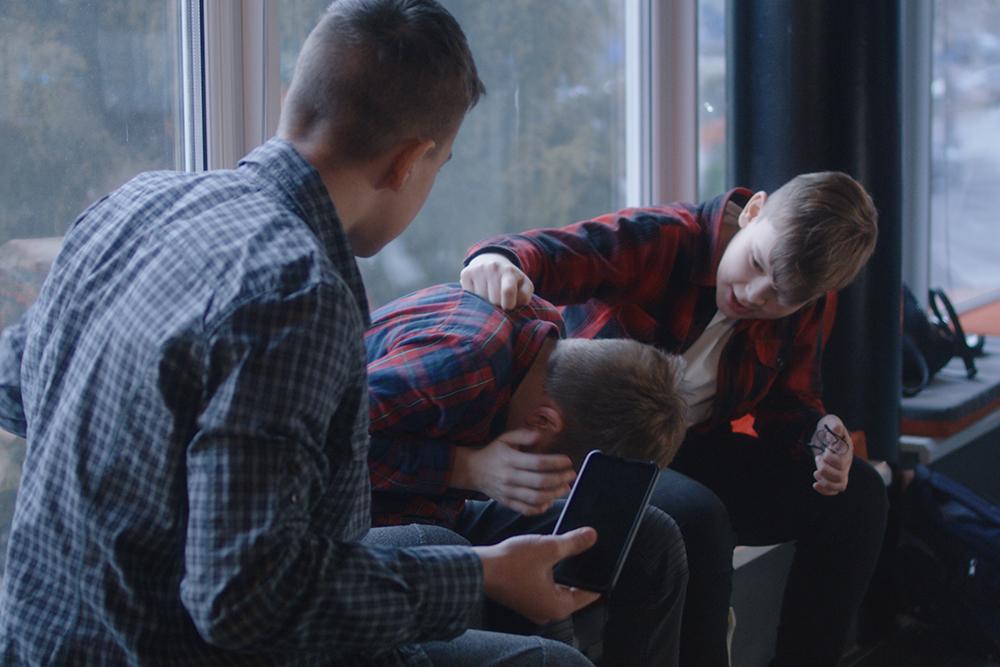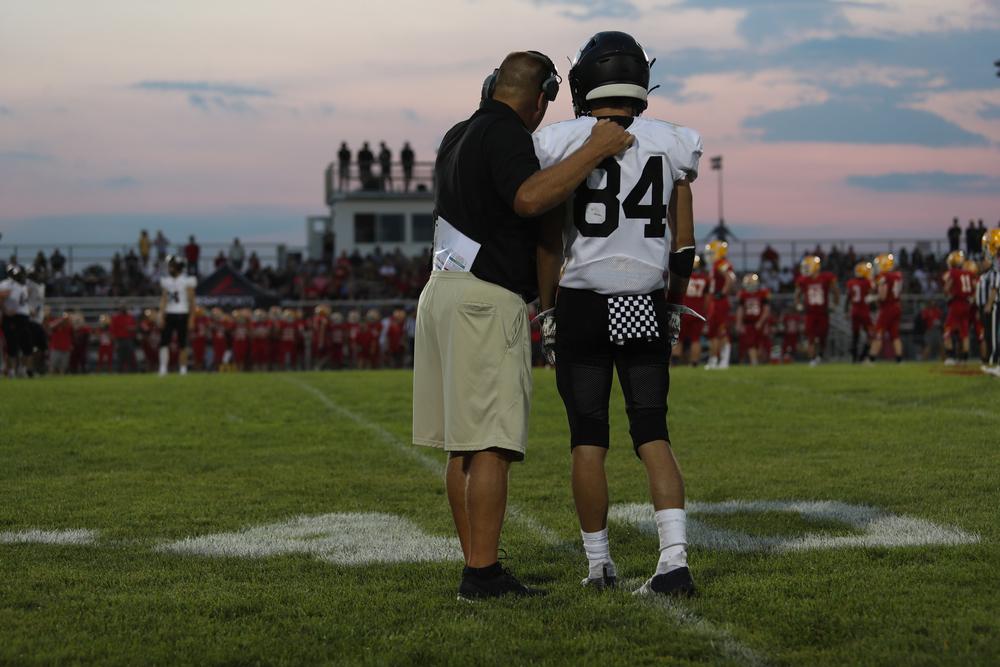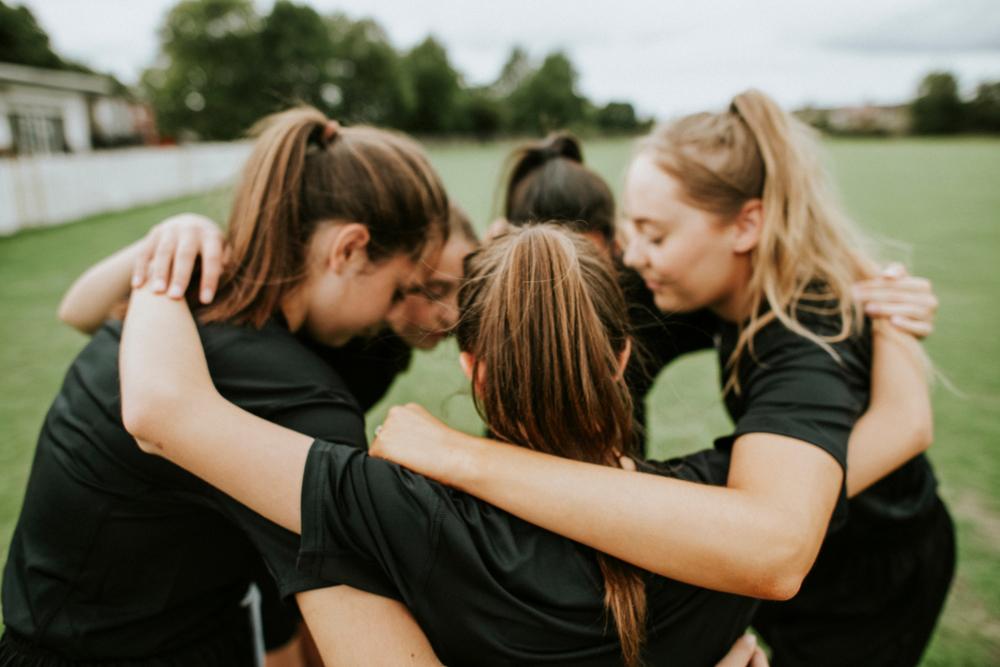 Bullying is a huge topic in schools, on playgrounds, and in youth sports. And while parents are generally aware bullying is a problem, the natural tendency is to focus on our own children – both in terms of making sure they are not bullied and that they are not bullying others.
Bullying is a huge topic in schools, on playgrounds, and in youth sports. And while parents are generally aware bullying is a problem, the natural tendency is to focus on our own children – both in terms of making sure they are not bullied and that they are not bullying others.
To get a wider perspective on the scope of the bullying problem and the effect it can have on kids, TrueSport Expert Nadia Kyba, MSW, President of Now What Facilitation, is explaining the latest research and tactics for dealing with bullying behavior.
1. Separate the bullying behavior from the child.
It’s important to start the conversation about bullying by separating the person from the behavior, says Kyba. While it’s tempting for kids and parents to immediately label another child a bully based on a single incident, Kyba recommends trying to see the behavior as ‘bullying behavior’ done by a child, rather than calling the child a bully. These labels aren’t helpful, she says, and can negatively impact both the child being bullied and the child who caused the distress.
Labeling a child a bully is a problem because it implies that this behavior is a fixed part of their personality and can’t change, according to research from the National Bullying Prevention Center. Bullying behavior is shockingly common, and according to the National Bullying Prevention Center, one out of every five (19.2%) students report being bulled. While bullying is never acceptable, Kyba notes that it can be helpful to consider the situation. Often, children exhibiting these bullying behaviors learned them from parents or siblings or are exhibiting these behaviors because they’ve been subjected to them.
“The word ‘bullying’ is also subjective, so it means something different to different people,” Kyba adds. It’s important to be clear about what exactly the behavior was: Was your child being taunted online, physically assaulted, yelled at during recess, teased for something about their appearance, or being ignored? The clearer you can define the behavior, the easier it is to find a solution or get to the root of the actual issue.
2. Bullying looks different in today’s world.
 Many students have parents who grew up before there was widespread internet access, web-enabled smart phones, or social media. Kyba notes that what we may remember as ‘traditional bullying behaviors’ (like taunts on the playground) are no longer the only kind of bullying that kids are exposed to, and that online bullying can be as damaging as in-person behaviors. While it may seem too soon for cyberbullying to be a problem for your child, it is important to recognize the risk begins as soon as kids go online. According to the National Center for Education Statistics, among students who were bullied in 2021 and 2022, 22% reported that the bullying happened online or by text.
Many students have parents who grew up before there was widespread internet access, web-enabled smart phones, or social media. Kyba notes that what we may remember as ‘traditional bullying behaviors’ (like taunts on the playground) are no longer the only kind of bullying that kids are exposed to, and that online bullying can be as damaging as in-person behaviors. While it may seem too soon for cyberbullying to be a problem for your child, it is important to recognize the risk begins as soon as kids go online. According to the National Center for Education Statistics, among students who were bullied in 2021 and 2022, 22% reported that the bullying happened online or by text.
As with offline bullying, it is crucial for parents, teachers, and coaches to proactively teach kids how to interact responsibly online and how to report cyberbullying, as well as ensure there are safe, supportive, and confidential opportunities to report cyberbullying.
3. Bullying can change behaviors of children being bullied.
In 2011, researchers found that of more than 1,500 high school students who were surveyed about weight-based victimization, 84% reported observing overweight students being called names and being teased during physical activities, like physical education classes and youth sports. Young athletes who experience bullying and weight-based victimization during physical activities are more likely to quit sports altogether, which decreases the likelihood that physical exercise will remain an integral component of their lives through adolescence and adulthood.
As parents, coaches, and teachers, it is crucial to make exercise environments a safe place for everyone. “It’s just so prevalent in our society that we talk about other people’s bodies, and I think as caregivers or coaches, we need to have conversations with our children to explain that everybody has different bodies, and it’s not for us to judge anyone else’s. If you hear them making comments about their body or someone else’s, that needs to be addressed immediately because we know how detrimental that can be.”
4. Often, bullying goes unreported.
Though there have been great strides in providing kids with opportunities to report bullying, it can still be a very hard decision for a kid to make. According to data from McLean at Massachusetts General Hospital, less than half of children who experience bullying report it. Some kids fear reporting their bully will worsen the torment rather than solve it. Others fear they themselves will get in trouble or they feel ashamed of having to ask for help.
This is why it’s important for coaches, parents, and teachers to proactively watch for signs of bullying and offer opportunities for kids to speak up. Kyba says that caregivers need to create safe spaces for their children to come to them when issues arise—and that being able to talk through situations with your child is more important than immediately being reactive and trying to solve the problem for them. She suggests asking open-ended, nonjudgmental questions about what happened, and to be open to coming up with solutions to the problem together.
5. You may be giving your child the wrong advice about dealing with a bully.
Research from 2001 found that in 57% of bullying situations, the bullying stopped when a peer intervened. However, standing up to someone who is bullying another child isn’t necessarily the safest course of action for many children, Kyba says. “In the past, we put an onus on people who witness bullying to step in, and we told them that if they’re not comfortable stepping in, then they are not brave and they’re part of the problem. But this ignores power structures in our society: A bystander may not feel safe intervening, and we shouldn’t criticize them for that.”
Instead, it’s important for young people to learn the different ways to intervene that do feel safe. Kyba adds that it’s not always stepping directly between the child being bullied and the person doing the bullying. “Sometimes it’s going and talking to the person who was bullied afterwards,” she says. “Sometimes, it’s distracting the person who’s doing the bullying by jumping in or going to get help from an adult. Even standing by but acting as though you disapprove can help stop someone from bullying.”
6. The most commonly recommended interventions may be the least effective.
Interventions that focus on actions the person being bullied can take on their own (walking away, pretending it doesn’t bother you, telling the person doing the bullying to stop, fighting back) have some of the worst outcomes, according to studies by Davis and Nixon (2010) and research from psychologist Dan Olweus. Instead of placing the responsibility of ending bullying on the person being victimized or calling out other children for not intervening, that responsibility rests with adults.
The reason school systems and sporting organizations have mounted comprehensive anti-bullying programs is because an analysis of the research on bullying done in 2017 by William Hall shows significantly lower rates of bullying in environments where organizations, teachers, and parents take a clear stance against bullying that incorporates all students – not just the kids directly affected by bullying. As parents in a school or sporting community, it’s important to proactively take part in the community’s anti-bullying program because the program’s effectiveness improves with adult participation.
7. Intervene, but don’t be reactive.
“For caregivers, it’s important to pay attention to changes in behavior that could suggest that your child is being bullied,” Kyba says. “Watch for things like sudden withdrawal, a change in personality, a change in their social habits, or their participation in activities. The trick is for parents to stay engaged and aware of what’s going on in your kids’ lives so that you can notice these changes and then start to ask questions to figure out what’s going on. We want to catch potential issues early.”
However, when your child does come to you with an issue, Kyba notes that it’s important not to be immediately reactive—phoning the school principal, emailing the coach, texting the other child’s parents—but rather, listen and work with your athlete to find the best solution.
“It’s important to talk to your child before you talk to the coach if you’re concerned about something,” she adds. “Let them know why you’re going to contact the coach, especially if they don’t necessarily want you to do so. If they are against it, it’s important to just stop and really listen to the reasons why. There may be a piece of information that changes the context.”
_____________________________
Takeaway
It’s important for caregivers to understand the varying bullying behaviors that kids may experience today and how that may impact them, as well as how to best intervene and support their children in those situations. Remember to work with your athlete on the best solution and place the onus on adults to remedy the situation.



